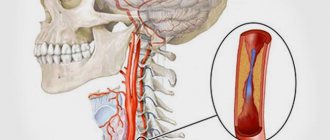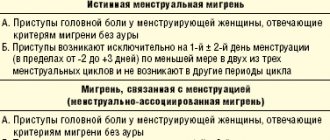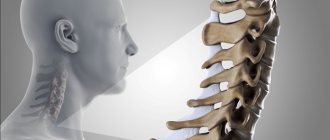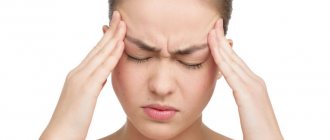Headache is one of the most common types of neurological disorders according to the World Health Organization. WHO statistics state that half of the world's adult population experiences an episode of headache at least once a year.
Despite its widespread prevalence, the pathology is often not treated properly: many patients prefer not to seek medical help, but to take available painkillers to temporarily numb the pain. But such a decision is dangerous because of its consequences: a headache may not be an independent disease, but a symptom of a serious neurological disorder. What types of headaches exist and which specialist should I contact for treatment?
Why does my head hurt?
Any discomfort that occurs in the body indicates the occurrence of pathological processes, and headaches are no exception. There are many reasons why discomfort occurs. Among the most common:
- violation of the tone of blood vessels supplying the brain;
- poisoning;
- infections;
- fever;
- traumatic brain injury (TBI);
- diseases of the spine.
A headache attack can be triggered by a disturbance in sleep patterns, a change in climate zone, or prolonged physical or intellectual overload. Even a single case of headache indicates some kind of disorder in the body, but if attacks occur regularly, it is recommended to make an appointment with a neurologist.
Headaches can be concomitant symptoms of other diseases: meningitis, sinusitis, sinusitis. If discomfort persists for a long time or is constantly repeated, the patient may have cardiovascular pathologies, kidney disease, or parasitic infestations. Sharp pain in the orbital area can be caused by glaucoma and eye abnormalities.
Only a specialist can determine the exact cause of headaches after examination and additional tests.
How does a migraine headache hurt?
The nature and intensity of migraine pain is determined individually.
Below are common signs of migraine pain. To accurately diagnose this disease, you need to consult a neurologist. Principles of diagnosing migraine
Strong headache
Often patients report a headache of moderate or severe intensity with a characteristic periodic increase and decrease in pain.
One-sided pain
Migraine in many cases manifests itself as a unilateral headache, which is referred to as hemicrania. This pain is described as gradually increasing severe pain in one temple, above the eye socket, in the forehead, behind the eye socket, in the crown or in the back of the head.
In the same patient, attacks are observed either on the right or on the left side, but one of the sides usually predominates. It may also spread to the entire head as the attack continues.
Throbbing pain
Pulsating vascular pain is often characteristic of the onset of an attack, and then becomes constant. During an attack, the pain can pulsate with any physical activity. The pain may be aggravated by voluntary or passive movements of the head, as well as by coughing, sneezing or vomiting, due to the jerking reflexes characteristic of these reflexes.
What types of headaches are there?
In neurology, the “International Classification of Headache Disorders” approved by WHO is used. According to the current classifier, there are 13 main groups of headaches, some of which are characterized as primary (that is, being an independent pathology), and some as secondary (occurring against the background of other diseases).
The cause of the primary headache can be:
- vascular in nature - caused by cerebral vascular dystonia and can be different: pulsating, aching, causing a feeling of squeezing and heaviness. Symptoms depend on the characteristics of the pathology: for example, if the venous outflow is impaired, the patient complains of a feeling of fullness, which intensifies when lying down;
- vertebrogenic – caused by spinal pathology, for example, cervical osteochondrosis. In this case, the curvature of the spinal column disrupts the normal nutrition of the brain, which becomes the cause of acute or aching pain;
- Tension headache is the most common type, which is described by patients as a feeling of pressure, a “hoop” or “helmet”. It can occur occasionally or regularly - in this case, neurologists talk about chronic pathology. Develops against the background of autonomic dysfunctions and constant stress;
- migraine - paroxysmal severe pain that appears on one side of the head. Often accompanied by sensitivity to light and smells, nausea, and vomiting. Usually occurs in young people under 35 years of age;
- trigeminal autonomic cephalgia, which includes, for example, cluster pain. It is characterized by sharp painful attacks that occur on one side of the head, alternating with periods of remission. As a rule, the attack is quite short and lasts a few seconds;
- cough - occurs against the background of coughing, sneezing or other physical stress associated with straining. It has a sharp cutting nature, lasts from several minutes to half an hour;
- developing after physical activity - appears exclusively after various exercises, training, running or heavy physical work
A separate classification exists for secondary headaches. According to it, pathology can develop against the background of infections (for example, meningitis), after traumatic brain injuries and neck injuries, with ENT diseases, mental disorders, and depression. A separate category includes headaches that appear from uncontrolled use of painkillers.
For effective treatment, it is necessary to establish the type and cause of the headache. This can be done during an examination by a qualified neurologist.
Signs of a migraine: how to tell if you have this type of headache
Migraine is a chronic pathology of the nervous system, the main symptoms of which are episodic, severe attacks of pulsating headaches. Most often, migraine is localized in the frontotemporal area, but it can also appear in other parts of the head.
This disease has a number of symptoms by which it can be accurately distinguished among the various types of headaches. However, it should be noted that in each individual case the pathology may occur differently.
Migraine headaches are caused by abnormal brain activity. This action can be caused by many things. But the exact chain of events remains unclear. Most medical experts believe that the attack begins in the brain and affects nerve pathways and chemicals. The changes affect blood flow in the brain and surrounding tissues.
Migraine headaches typically appear between the ages of 10 and 45. Sometimes they start earlier or later. Migraines can be inherited. Migraines occur more often in women than in men.
Migraine attacks can be caused by any of the following:
- caffeine withdrawal;
- changes in hormone levels during a woman's menstrual cycle or while taking birth control pills;
- changes in sleep patterns, such as lack of sleep;
- alcohol consumption;
- exercise or other physical stress;
- loud noise or bright lights;
- missed meals;
- odors or perfumes;
- smoking or exposure to smoke;
- stress and anxiety.
Migraines can also be triggered by certain foods. The most common:
- chocolate
- dairy products, especially some cheeses;
- products with monosodium glutamate (monosodium glutamate);
- foods with tyramine, including red wine, aged cheese, smoked fish, chicken liver, figs and some beans;
- fruits (banana, citrus);
- meat containing nitrates (bacon, hot dogs, salami, sausages);
- bulb onions;
- peanuts and other nuts and seeds;
- processed, fermented or pickled foods.
True migraines are not the result of a brain tumor or other serious health problem. Only a doctor who specializes in headaches can determine whether your symptoms are caused by migraines or another condition.
What migraine symptoms [Verified source] may a person experience:
- throbbing pain in the temples or in one temple, frontal area;
- nausea, urge to vomit;
- increasing pain with any head movements;
- exacerbation of discomfort due to strong odors;
- ordinary physical activity can increase the manifestations of this pathology;
- increased pain as a reaction to bright lights or loud sounds.
Remember, the absence of any of the above symptoms does not exclude the presence of a migraine.
In medicine, the following types of migraine are distinguished [Verified source]:
- with a combination of neurological symptoms (migraine with aura), namely visual and motor disturbances, numbness in different areas of the head. It occurs in 15% of cases;
- without aura, such migraine attacks occur in 85% of cases.
Migraine attacks are similar to each other and can recur over several days, months and even years. A recurring disease is called chronic and requires medical attention.
If a severe migraine attack persists for several days, the patient may be prescribed intravenous drug therapy, which is provided in the emergency department.
Do not trigger the pathology in question and do not self-medicate - this can lead to negative consequences.
How is a migraine different from a headache?
Migraine is often called any headache, but this is a misconception. In fact, migraine is one of the types of headaches that has a number of distinctive features:
- pain is localized in one half of the head;
- has a sharp, often pulsating character;
- pain syndrome is accompanied by increased sensitivity to smells and light, as well as nausea, often vomiting;
- an attack rarely lasts longer than a day.
Often before a migraine, patients experience characteristic signs of developing pain: for example, short-term blurred vision, tingling in the fingertips. The disease is more often diagnosed in young people aged 18 to 35 years, women are more susceptible to migraines than men.
Despite the prevalence of migraine, neurologists have not fully established the cause of its occurrence. The main factors associated with the development of migraines:
- heredity;
- vascular pathologies of the brain;
- congenital abnormalities of brain tissue.
An attack can be triggered by stress, an unbalanced diet, lack of proper rest, or sudden intense physical activity. Migraine is one of the most severe headaches, temporarily depriving a person of his ability to work. To stop it, it is necessary to choose the right medications, as well as adhere to preventive measures developed by the observing neurologist.
Why is it dangerous and does it need to be treated?
Even if you are faced with a single attack of mild headache, this indicates the presence of hidden disorders that can develop in the future and lead to various pathologies: for example, vascular disorders. But there are markers indicating that you should contact a neurologist immediately:
- the pain is sudden, intense, and difficult to bear;
- pain appeared after physical labor or sports training;
- you recently had a head injury (severe bruise, blow from a fall);
- headache increases with changes in body position;
- painful sensations are accompanied by other symptoms: blurred vision, numbness of the limbs, goosebumps, nausea, unfocused attention, fever.
An attack can be caused by a stroke, acute poisoning, oxygen starvation of brain cells, or infections. Therefore, it is necessary to make an appointment with a neurologist as soon as possible. The specialist will conduct an initial examination and prescribe additional examinations:
- Doppler ultrasound – ultrasound examination of the vessels of the neck and head. Allows the doctor to determine the volume of blood flow, detect fluid stagnation, assess the elasticity of the vascular walls, and so on. Vascular problems are one of the most common causes of frequent pain and dizziness;
- SCT (spiral computed tomography) is a non-invasive examination that allows you to assess the condition of the brain tissue and meninges, detect deviations from the norm, structural abnormalities, foci of inflammation, tumors, bleeding;
- MRI of the brain. Another non-invasive study, painless and safe for the patient. In the images, the neurologist can see pathologies, injuries, paroxysmal conditions, abnormal vasodilation and other abnormalities.
If the infectious nature of the disease is suspected, general tests may be prescribed: for example, urine and blood tests.
You should also consult a neurologist if you periodically suffer from headache attacks. The doctor will determine the causes of pain and select effective therapy to eliminate it.
It's not just a headache - the main questions about migraines
Author:
gastroenterologist Anton Smirnov
2 minutes
3973
Despite the fact that migraines affect about 15% of people around the world, many of those who face this painful condition hear from others “no big deal, just take a pill.” Brian M. Plato, a neurologist at the Norton Neuroscience Institute, answered the most common questions his patients ask him.
How to distinguish a migraine from a regular headache?
Migraine is accompanied by headache attacks that last from 4 to 72 hours. As a rule, the pain is localized in one part of the head, often throbbing. Migraine significantly reduces physical activity; in this state, a person most wants to lie in a dark and quiet place. Most often, this condition begins with two phases, which are a harbinger of migraine:
- The prodromal phase occurs several hours or days before a migraine. Accompanied by irritability, depressed mood, fatigue, and a tendency to overeat. Brian Plato notes that prodromal signs do not appear in everyone - in about 30% of patients.
- The aura phase that occurs immediately before a migraine. This phase manifests itself in visual and sensory disturbances. The patient begins to see bright lights, colored lines, and sometimes temporary loss of vision occurs. The sensory aura is expressed by numbness and tingling in different parts of the body. 20% to 25% of patients experience this phase.
What causes migraines?
It is generally accepted that the brain of a person prone to this condition is more sensitive to stimulation. Migraines can also be caused by genetic predisposition and be the result of head injuries and infectious diseases such as meningitis.
Migraine triggers are numerous, and, as a rule, migraine is not caused by any specific trigger, but by a complex - menstruation, eating certain foods, lack of sleep, stress, etc.
Is it dangerous?
Migraines can damage brain cells and increase the risk of stroke, but Dr. Plato says this is rare. It is much more common for episodic migraine attacks to go untreated, and this can cause a chronic condition that is much more difficult to treat and reduces the sufferer's quality of life.
A chronic process called allodynia gradually makes nerve cells more excitable. This leads to the fact that hypersensitive nerves begin to react painfully to any irritants, even to a light touch of the skin. To get rid of this condition, the patient begins to take even more medications, which further aggravate the chronic condition. Therefore, it is important to seek help from a doctor as early as possible in order to not only treat migraines, but also keep them under control.
When should I call an ambulance for a migraine?
Urgent medical attention for a migraine is required if the condition reaches its maximum intensity within a minute - such a headache is called a thunderclap headache because it closely resembles a powerful clap of thunder. You should also consult a doctor immediately if neurological symptoms appear during a migraine, such as severe weakness, numbness of the limbs, and inability to speak.
“I generally advise people with migraines to contact their doctor at any time if current treatment does not provide relief,” says Brian Plato.
The doctor also recommends taking his condition very seriously, even if those around him shame him for his weakness and say something like “get it together, you wimp.” Patients with migraine often try to treat themselves because they face quite serious stigmatization from society.
“Your migraine is real. Your pain is real. The risks of worsening the condition are also real, remember this. But the good news is that you have a chance of recovery. Please don't wait until it's too late."
Which doctor should I consult for treatment of migraines and headaches?
If you have episodic or regular headaches, you should consult a neurologist. In order for the doctor to quickly determine the nature of the pathology and establish its cause, be prepared to answer a number of questions:
- in which area of the head the discomfort is localized: in the forehead, in the temples, on the back of the head;
- what is the nature of the pain: pulsating, dull, sharp, migrating, etc.;
- how long ago it appeared and how often it repeats;
- is it accompanied by additional symptoms: sensitivity to light, smells, nausea;
- whether other family members suffer from headaches;
- Do you have a history of birth, traumatic brain injury, neuralgia, or previous neurological infections?
Patients may be advised to keep a special diary in which to record recurring episodes, their triggering factors, duration, and course characteristics. The neurologist may also ask about the daily routine, the nature of work, and lifestyle. After examination and receiving test results, the doctor will accurately determine the type and cause of pain and select the appropriate medicine.
The treatment is complex and is aimed both at relieving attacks of pain (with the help of various analgesics) and at eliminating the root cause of its occurrence. Much attention is paid to lifestyle correction.
Is it possible to get rid of headaches using traditional medicine?
Many patients faced with recurrent headaches are in no hurry to consult a neurologist and try to recover with the help of traditional medicine. However, this approach does not lead to a positive result: any self-medication is dangerous. This is due to a number of reasons:
- uncontrolled use of painkillers (even of herbal origin) can lead to serious side effects: disruption of the liver and kidneys, allergic reactions, problems with the gastrointestinal tract. This will not only not relieve neurological disorders, but will also lead to the development of new pathologies;
- The cause of the headache can only be determined after a series of medical examinations. Without this, any therapy comes down to masking the symptoms, while the pathology causing the headache continues to develop.
Therefore, you should not postpone your visit to the doctor and rely on traditional medicine. But patients can actually take some actions that will reduce the frequency of relapses and relieve headache attacks. We are talking about developing healthy lifestyle habits:
- regular physical activity. One of the common causes of headaches is physical inactivity, as a result of which the tone of muscles and blood vessels decreases, the blood supply to the brain tissue deteriorates, and degenerative processes begin. Sports and exercise help strengthen the body and reduce the risk of chronic headaches;
- balanced and varied diet. It is recommended to exclude fast food, fatty, smoked and salty foods from the diet, eat more vegetables and fruits, replace white bread with rye bread or baked goods with bran. A properly selected diet is a good prevention of vitamin deficiencies; it also prevents excess fluid from accumulating in the body, which can increase intracranial pressure and lead to migraines;
- full 8-hour sleep. During sleep, the body recovers and “gets rid” of psycho-emotional stress. Regular lack of sleep undermines a person’s immunity, increases stress levels, and leads to cerebral vascular spasms;
- correct drinking regime. Necessary for maintaining a healthy water-salt balance in the body. Doctors usually recommend drinking up to 2 liters of clean drinking water per day (not counting liquid obtained with other products). During hard physical work, intense physical activity, and in hot weather, the amount of water consumed should be increased;
- regular walks in the fresh air (from 1 hour a day). While walking in parks and forested areas, the body receives the missing physical activity, the blood is saturated with oxygen. This is also important for preventing headaches.
Is it possible to get rid of headaches and migraines? It is expensive?
If you consult a neurologist in a timely manner, you can completely get rid of headaches. The doctor will select drug therapy and develop preventive recommendations to prevent relapse.
To fully recover, you will need:
- follow medical instructions;
- normalize work and rest schedules;
- get rid of the causes of headaches (concomitant diseases);
- lead an active and healthy lifestyle.
Your health is in your hands! There is no need to think that recovery is expensive. Much of your success depends on how willing you are to change your life for the better and follow your doctor's orders.
1
0
0
Article rating:
5 out of 5 based on 1 rating
Author: Atamanenko Alena Valerievna
General practitioner, endocrinologist, physiotherapist. Second category. Work experience more than 9 years.
How to treat migraine?
No way. It is impossible to completely cure any disease caused by genetic defects. But there is good news! Nowadays medicine, unlike ancient Greek, no longer offers drilling holes in the skull to expel the evil spirits of migraines, but now there are medications that can:
- alleviate the condition during an attack;
- slightly reduce the intensity and frequency of attacks.
Since it is impossible to completely get rid of migraines, you need to strive to bring them into “perfect balance.” That means:
- no more than 2 attacks per month;
- The duration of each attack is no longer than 2 hours.
What can be done for this?
1. Identify your triggers (factors that provoke an attack) and, if possible, avoid them.
2. Talk to your doctor about medications that can help make attacks less painful, and start taking them. What kind of drugs are these?











